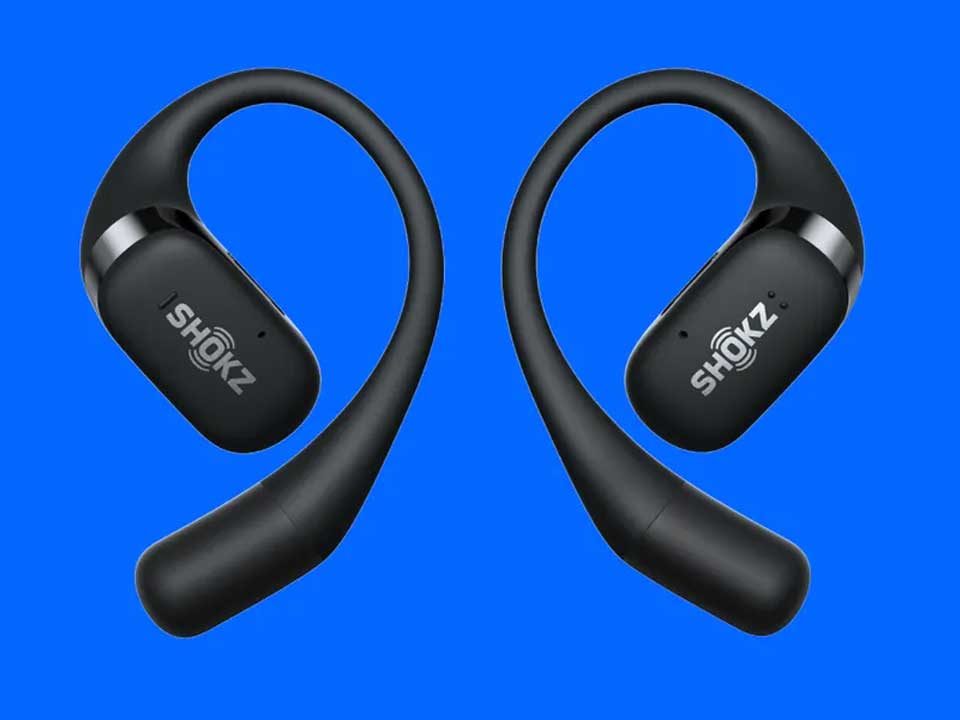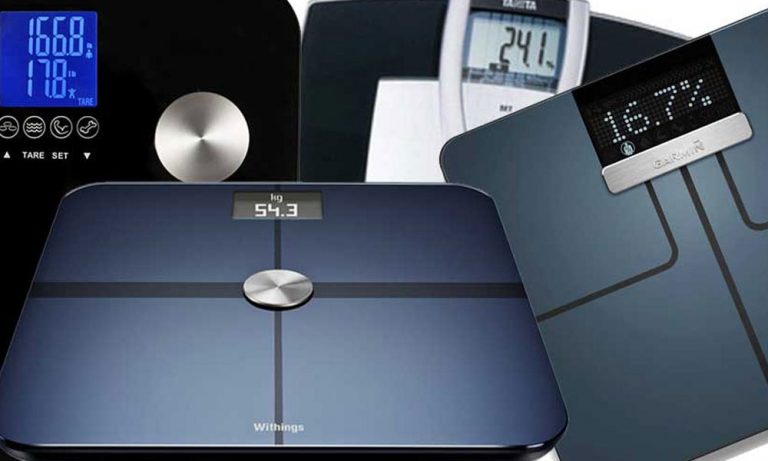Do Bone Conduction Headphones Work? An Honest Review

ListedFit is reader-supported. When you buy through links on our site, we may earn a small commission.
Bone conduction headphones are a unique type of wireless earphones that have been gaining popularity in recent years.
They work by bypassing your eardrums and transmitting sound vibrations through your cheekbones, directly into your inner ear. This allows you to enjoy music, podcasts, phone calls, or other sounds from your headphones while still being able to hear external noises.
Quick Summary
But how do bone conduction headphones work, and do they work? The short answer is yes, they do work. Bone conduction technology has been used in the hearing aid industry for decades, and it is a proven way to transmit sound vibrations to the inner ear.
But the sound quality and performance of bone-conduction headphones can vary depending on the specific model so you have to pay extra attention.
Key Takeaways
- Bone conduction headphones transmit sound vibrations through your cheekbones directly into your inner ear, bypassing your eardrums.
- Bone conduction technology is a proven way to transmit sound vibrations to the inner ear, but the sound quality and performance of bone conduction headphones can vary depending on the specific model and your individual needs and preferences.
- Bone conduction headphones allow you to enjoy music, podcasts, phone calls, or other sounds from your headphones while still being able to hear external noises.
In This Article…
How Do Bone Conduction Headphones Work?
If you’re new to bone-conduction headphones, you might be wondering how they work. Unlike traditional headphones that use speakers to create sound waves that travel through the air and into your ear canal, bone conduction headphones use vibrations to transmit sound directly to your inner ear through your cheekbones.
This short video explains how bone-conduction headphones work.
The headphones typically consist of a headband or wraparound design that rests on your cheekbones, with small speakers or transducers that send vibrations into your skull. These vibrations are then picked up by your inner ear, allowing you to hear the sound without blocking your ear canal.
One of the major benefits of bone-conduction headphones is that they allow you to hear your surroundings while still enjoying your music or other audio. This is because the headphones don’t completely block your ear canal, so you can still hear external sounds like traffic or people talking.
Bone conduction headphones are a unique and innovative way to listen to audio without blocking out the world around you.
The technology behind bone conduction headphones has been around for a while and is often used in medical applications like hearing aids. However, it’s only in recent years that bone-conduction headphones have become more widely available for consumer use.
What Are The Most Popular Bone Conduction Headphones Around Now?
When it comes to bone-conduction headphones, there are several types and manufacturers to choose from. Here are a few examples:
Shokz Bone Conduction Headphones
Shokz is a popular manufacturer of bone-conduction headphones. They have two models out right now that are among the most popular on the market, the OpenRun and the OpenFit.
There are also cheaper bone conduction options available all over Amazon and eBay, some coming in at less than half of the price of the top-of-the-range Shokz models.
I have tried the Shokz Aeropex model in the past and I was actually quite surprised. Check out the review below:
There are many different types and models of bone-conduction headphones on the market to choose from, with some offering different features and in some ways performing better than others.
Make sure you consider your specific needs and preferences before selecting a pair, such as whether you need them for running or everyday use, and whether you prefer a more secure fit or a more open design.
Sound Quality and Performance
When it comes to sound quality, bone-conduction headphones have a unique advantage over traditional headphones. Because they don’t block your ear canals, you can still hear your surroundings while listening to music or other audio. This can be particularly useful when exercising outdoors or when you need to be aware of your surroundings.
However, the sound quality of bone-conduction headphones can vary depending on the model you choose. Some models may not provide as much bass as traditional headphones, while others may have a tinny or hollow sound. It’s important to do your research and read reviews before making a purchase.
If you’re an audiophile who values high-quality sound above all else, bone-conduction headphones may not be the best choice for you. While some models can provide decent sound quality, they typically can’t match the audio quality of high-end traditional headphones.
That being said, if you’re looking for a pair of headphones that provide good sound quality while also allowing you to hear your surroundings, bone-conduction headphones may be a good option. Just be sure to choose a model that has good reviews and fits your specific needs.
Comfort and Fit
When it comes to headphones, for me comfort is key. Uncomfortable headphones are a pain to use. The good thing is that bone-conduction headphones are designed to be comfortable to wear.
It can be very easy to forget that you have them on because they don’t move and they don’t squeeze your head tightly. They just sort of, rest nicely on your head.
One of the benefits of bone-conduction headphones is that they don’t go inside your ear canal, which can be uncomfortable for some people. Instead, they rest on your cheekbones, which can feel strange at first, but most people get used to it quickly.

Bone-conduction headphones can be a more comfortable option for those who find traditional headphones uncomfortable. Just make sure to choose a pair with a stable fit and adjustable headband to ensure a comfortable listening experience.
Another factor that affects comfort is the headband. Some bone-conduction headphones have a headband that goes over your head, while others have a wrap-around design that fits snugly around your ears. The headband should be adjustable to ensure a comfortable fit for different head sizes.
Stable fit is also important when it comes to bone-conduction headphones. You don’t want them slipping off your head while you’re moving around. Look for headphones that have a secure fit, such as those with ear hooks or a wrap-around design.
Your Safety and Situational Awareness
When it comes to bone-conduction headphones, safety is a common concern. However, the good news is that bone conduction technology is generally considered safe for use. Unlike traditional headphones that cover your ears and block out surrounding sounds, bone conduction headphones keep your ears open, allowing you to hear ambient sounds such as traffic or conversations while enjoying your audio experience. This feature enhances your situational awareness, especially for outdoor activities.
One of the main benefits of bone conduction headphones is that they do not obstruct your ear canals, which can be particularly important for those who need to be aware of their surroundings, such as cyclists or runners. With bone-conduction headphones, you can still hear what’s going on around you while enjoying your favourite music or podcast.
It’s also worth noting that bone-conduction headphones are not likely to cause hearing damage. They transmit sound to the cochlea in the same way as any other sound source, and they don’t require you to turn the volume up as high as you might with traditional headphones to hear the same level of sound.
Of course, as with any headphones, it’s important to use bone-conduction headphones responsibly. Be mindful of the volume level and take regular breaks to give your ears a rest. Additionally, be aware of your surroundings and always prioritise your safety, especially when you’re in busy or noisy environments such as traffic.
Scenarios Where Bone Conducting Headphones Would Be Super-Useful
Bone conduction headphones are a great alternative to traditional headphones, especially in scenarios where you need to be aware of your surroundings. Here are some usage scenarios where bone-conduction headphones can be particularly useful:
Sports and Running
If you’re a runner or an athlete, you know how important it is to be aware of your surroundings while exercising. Bone conduction headphones allow you to listen to music or take calls while still being able to hear traffic, other runners, or any other potential hazards around you. They’re also sweat-resistant, so you don’t have to worry about damaging them during intense workouts.
Office
In an office environment, you might need to be aware of your surroundings while still being able to listen to music or take calls. Bone conduction headphones allow you to do just that. You can listen to music or take calls without completely blocking out your coworkers or other important sounds in the office.
Swimming
If you love swimming, bone-conduction headphones can be a game-changer. They’re completely waterproof, so you don’t have to worry about damaging them in the water. You can listen to music or take calls while still being able to hear other swimmers or any potential hazards in the pool.
Advantages 👍 and Disadvantages 👎 of Bone Conduction Headphones
Advantages of Bone Conduction Headphones
Bone conduction headphones have become increasingly popular in recent years and for good reason. Here are some of the advantages of using bone-conduction headphones:
- They are safer for your hearing: Unlike traditional headphones that sit inside or over your ears, bone conduction headphones do not block your ear canal. This means that you can still hear your surroundings while listening to music or taking calls. This is particularly useful for outdoor activities like running or cycling where you need to be aware of your environment.
- They are more comfortable: Traditional headphones can cause discomfort or even pain if worn for long periods of time. Bone conduction headphones sit outside your ear and do not put pressure on your eardrums, making them much more comfortable to wear for extended periods. It is very easy to forget you even have them on.
- They are great for people with hearing impairments: For those with hearing aids or hearing loss, bone-conduction headphones can be a lifesaver. They bypass the eardrum and transmit sound directly to the inner ear, making them a more suitable option for those with hearing deficiencies.
- They are wireless: Most bone-conduction headphones are wireless and connect via Bluetooth, making them convenient to use and eliminating the need for tangled wires.
Disadvantages of Bone Conduction Headphones
While bone conduction headphones have many advantages, they also have some disadvantages that you should be aware of before purchasing:
- Sound quality is not as good as traditional headphones: Because bone conduction headphones do not sit inside your ear, the sound quality is not as good as traditional headphones. The sound can also leak out, which may be annoying to those around you.
- They do not provide isolation: If you’re looking for headphones that block out external noise, bone-conduction headphones may not be the best option. They do not provide isolation, which means that you may still hear external noise while wearing them.
- They may not be suitable for those with middle ear problems: If you have problems with your middle ear, bone conduction headphones may not work for you. This is because they bypass the eardrum and transmit sound directly to the inner ear.
Beethoven and Bone Conduction
Have you ever wondered how Beethoven was able to compose music despite being deaf? It turns out that bone conduction may have played a role in his ability to hear music.

Beethoven suffered from hearing loss for most of his life, and by the time he composed some of his most famous works, he was completely deaf. However, he was still able to “hear” the music in his head and compose it. One theory is that he used bone conduction to “hear” the music.
Bone conduction works by bypassing the eardrum and sending vibrations directly to the inner ear through the bones in your skull. This means that even if your eardrums are damaged or you have hearing loss, you can still perceive sound through bone conduction.
In Beethoven’s case, it’s believed that he would bite down on a metal rod attached to his piano and place the other end on his forehead. This would allow him to feel the vibrations of the piano through his skull and “hear” the music in his head.
While bone conduction technology has come a long way since Beethoven’s time, the basic principles are still the same. Bone conduction headphones work by sending vibrations through your cheekbones and directly to your inner ear, bypassing your eardrums. This means that even if you have hearing loss or damage to your eardrums, you can still enjoy music and other audio through bone conduction.
So, next time you listen to Beethoven’s music, remember the role that bone conduction may have played in his ability to compose such beautiful works despite his deafness.
What Else Should A Good Pair of Bone-Conducting Headphones Have?
In addition to their unique sound delivery method, bone conduction headphones also come with a range of additional features that can enhance your listening experience. Here are some of the most common features you can expect to find:
Bluetooth Connectivity
Most bone-conduction headphones come with Bluetooth connectivity, allowing you to connect them to your smartphone, tablet, or other Bluetooth-enabled device. This means you can enjoy wireless music streaming and hands-free calling without the hassle of tangled wires.
Bluetooth 5.1
Some newer models of bone conduction headphones come with Bluetooth 5.1, which offers improved connectivity and faster data transfer speeds. This means you can enjoy a more stable connection and better sound quality, even when you’re on the move.
Battery Life
Battery life is an important consideration when choosing bone-conduction headphones. Most models offer around 6-8 hours of battery life on a single charge, which should be enough for a day’s worth of listening. Some models also come with a charging case, which can extend the battery life even further.
Water-Resistant/Waterproof Rating
If you plan on using your bone-conduction headphones for outdoor activities like running or hiking, it’s important to choose a model that is water-resistant or waterproof. Look for headphones with an IPX5 or higher rating, which means they can withstand sweat, rain, and even splashes of water.
Microphone
Many bone-conduction headphones come with a built-in microphone, which allows you to make and receive phone calls without having to take off your headphones. This can be especially useful if you’re using your headphones while exercising or on the go.
Overall, bone conduction headphones offer a range of features that can enhance your listening experience. Whether you’re looking for wireless connectivity, long battery life, or water-resistant design, there’s a model out there to suit your needs.
Frequently Asked Questions
Are bone-conduction headphones safe to use?
Yes, bone-conduction headphones are generally safe to use. They do not pose a risk of damaging your eardrums as traditional headphones can.
But, it is important to use them responsibly and not at excessively high volumes.
Can bone-conduction headphones cause hearing damage?
While bone-conduction headphones are generally safe to use, they can still cause hearing damage if used at excessively high volumes.
It is important to follow safe listening practices and avoid listening to music at high volumes for extended periods of time.
What are the downsides of using bone-conduction headphones?
One downside of bone conduction headphones is that they may not provide the same level of sound quality as traditional headphones. They also tend to be more expensive than traditional headphones.
Also, they may not be suitable for use in noisy environments as they do not block out external sounds.
How do bone-conduction headphones work?
Bone conduction headphones work by transmitting sound waves as vibrations through your skull to your cochlea, bypassing the eardrums and the middle ear.
This allows you to hear sound without blocking your ear canals, making them a popular choice for people who want to remain aware of their surroundings while listening to music.
Are bone-conduction headphones effective for people with hearing loss?
Bone-conduction headphones can be effective for people with certain types of hearing loss.
They work by bypassing the eardrums and transmitting sound directly to the inner ear, making them a good option for people with conductive hearing loss.
But they may not be as effective for people with sensorineural hearing loss.
Can bone-conduction headphones be used while swimming?
While some bone conduction headphones are marketed as waterproof, it is important to check the manufacturer’s specifications before using them while swimming.
It is also important to note that bone-conduction headphones may not work as well when submerged in water.
Author
-
Stuart Patrick is a health and fitness lifestyle journalist who writes for ListedFit.com.
“I've spent a lot of time trying to get in shape and change my body and I realised there are so many untruths in the health and fitness industry that can slow down or stop your progress, so I share my knowledge and experience to help others to cut through the BS.”
Latest entries
 MacaMarch 17, 2024Which is Better: Black or Red Maca? Comparing Benefits and Uses
MacaMarch 17, 2024Which is Better: Black or Red Maca? Comparing Benefits and Uses FitnessFebruary 18, 2024Join the Discount Club Today!
FitnessFebruary 18, 2024Join the Discount Club Today! KitchenFebruary 5, 2024Best Almond Milk-Making Machines 🥛 Cheap vs Expensive?
KitchenFebruary 5, 2024Best Almond Milk-Making Machines 🥛 Cheap vs Expensive? Barefoot ShoesDecember 18, 2023Can Barefoot Shoes Be Bad for You? Exploring the Potential Downsides
Barefoot ShoesDecember 18, 2023Can Barefoot Shoes Be Bad for You? Exploring the Potential Downsides
Affiliates:
This post may contain affiliate links that at no additional cost to you, the site may earn a small commission. We only recommend products we would use ourselves and all opinions expressed on this site are our own.
General Advice:
The information provided in this article is for general informational purposes only. It is not intended as a substitute for professional advice. Always consult with a qualified healthcare professional before starting any new diet, exercise program, or making changes to your health routine.
Accuracy Advice:
While we strive to provide up-to-date and accurate information, the content in this article may not reflect the most current research or medical guidelines. We encourage readers to do further research and consult with professionals for more personalized advice.
Our Recommendations:
The products and services mentioned in any of our articles are recommended based on our independent research and personal experience. We are not sponsored by any company. We aim to suggest products and services we believe are of high quality and could be beneficial to our readers.





